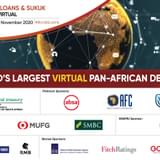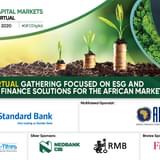African DFIs have played a critical role in the development of the region’s economies for the past 40 years. Since the 1960s, when many of the Africa’s development banks were first set up, more than 50 in-country DFIs have emerged, largely with a mandate to stimulate nascent industries and drive domestic employment across a wide range of sectors.
That period also saw the establishment of pan-African organisations like the African Development Bank (AfDB), devoted to doing much the same as traditional DFIs in addition to developing similar in-country institutions and large multilaterals like the International Finance Corporation (IFC), the private sector arm of the World Bank, which co-invests into projects in the region along with other private sector lenders and development banks. Some of the region’s largest and most well-known brands, like Ecobank or MTN Group, owe a great deal to capital injections made by these institutions when they were just starting out.
These banks have typically been fearless, going into some of the riskiest environments and working on projects that most commercial lenders wouldn’t touch. Much of that investment in the early years was in the form of equity injections, either directly or through diversified funds set up by these institutions. The initial focus of these institutions was not necessarily to fund businesses or projects directly but to bring outside partners into a country and deploy public funds to back industrial partnerships, thus helping to create a rising tide for a number of strategic sectors – with a strong focus on energy, infrastructure and agriculture in most cases.
The goal, broadly speaking, was always to help foster the development of particular sectors until they were sustainable – in other words, to stimulate local competition and high returns for investors, which in combination is the essential driving force behind any market. In recent years, most of the emphasis has been on helping to create an enabling environment for particularly strategic sectors, especially renewable energy. A good example of this is GET FiT, a dedicated support scheme for renewable energy projects jointly managed by Germany’s KfW and the Government of Uganda’s Electricity Regulatory Agency (ERA) that includes a combination of concessional lending and capacity building. The programme, launched in early 2013, is funded by the European Union Infrastructure Trust Fund, and is also supported by the Governments of Norway, Germany and the UK.
“It’s fair to say that the recent emphasis on enablement is one of the biggest shifts we have seen. There are many project sponsors that have the technical or commercial wherewithal necessary to carry a project through key stages, but you might not see them have the capacity to do the feasibility studies. Banks, including DFIs, are recognising that they will only fund them if projects are feasible, but who’s going to pay for feasibility studies? It’s a pretty cruel Catch-22 that prevents projects from moving forward or getting backed in the first place,” says Jonathan First, Head of Loan Syndications at the Development Bank of South Africa.
Mohan Vivekanandan, the bank’s Executive Vice President of Strategy says the DBSA is changing its tactics and coming into projects at a much earlier stage. The bank has set up a project preparation department that provides technical assistance to project developers, helping them with feasibility analysis and making projects more bankable.
“Making projects bankable ultimately helps get more private lenders on board, and helps us deploy capital more efficiently when we do carry through with balance sheet lending of our own,” Vivekanandan says. “It’s where DFIs can really make a difference.”
Debt Begets Debt
The mandates have changed very little over the past 40 years, but the means through which DFIs carry them out have, and quite rapidly over the past half-decade. One of the biggest shifts in the sector is an increased reliance on debt instruments to carry out their mandates.
“Equity used to be the primary mechanism for DFIs when backing a project or company, but over the past seven years there has been an acceleration towards relying more heavily on debt. One of the things that has driven this is, renewed appetite for debt has increased sovereign activity in the debt space, and the development of the region’s banks, particularly in places like Nigeria and Kenya,” , explains an Africa-focused economist at Standard Chartered in London.
“At the same time, DFIs have become much more commercial in terms of mindset and project bankability, and because government budgets are under more pressure than ever, DFIs are making greater efforts to self-fund by raising debt and bringing in other commercial or concessional lenders on deals.”
Over the past 10 years we have seen a number of African sovereigns tap the international debt capital markets to finance various spending initiatives domestically, particularly for social and development infrastructure. Between 2006 and 2009, a handful of Sub-Saharan African sovereigns – including Seychelles, the Democratic Republic of Congo (DRC), Gabon and Ghana – tapped the international markets for just over US$2.2bn cumulatively. Over the past five years at least a dozen others came to market with issuances of their own to make up for declining loans and grants from America and Europe, including South Africa, Côte d’Ivoire, Senegal, Angola, Nigeria, Tanzania, Namibia, Rwanda, Kenya, Ethiopia and Zambia, raising over US$24bn in commercial debt, according to figures compiled by Trevor Hambayi, a financial analyst and Research Fellow with the University of Bolton.
The rapid growth of African Eurobonds over the past five years has stimulated new international interest in credit on the continent, and DFIs like the AfDB have taken advantage of renewed lender and investor appetite in Africa by boosting project lending and tapping the debt market to finance their own lending.
The development of the pension fund system in many of Africa’s largest economies, despite their relatively small size as a percentage of GDP when compared to those found in countries like the UK or Germany, has also played a crucial role in simulating local currency credit appetite and satisfying long-term funding needs; pension funds in 10 African countries already had US$379bn in assets under management as of 2015 according to data from Renaissance Capital, and is expected to reach US$622bn by 2020.
New Pressures Prompt Evolution
Alongside the emergence of pension funds in many large African nations, renewed interest in the continent’s credits from international investors, and growing use of the debt capital markets, DFIs are being pressured in ways that could impact how they deploy capital, and thus how they support key sectors of the economy. Botswana Development Corporation (BDC) offers an insightful example. The DFI is currently in the process of securing a standalone credit rating in a bid to open up access to the international capital markets.
“The days of government allocation are well and truly over. The bond market comes with a lot of discipline, and the level of scrutiny on deals is much higher, so it does have an impact in terms of what your credit profile needs to look like. [Securing our rating in advance of any transaction] definitely has an indirect impact on the types of deals that we do,” explains Mbako Mbo, the organisation’s chief financial officer.
Mbo says that it is not as if commercial viability wasn’t a key factor governing which projects it would back, but that the threshold for bankability is now higher than ever. This has prompted BDC to look at ways of embedding concepts borrowed from private equity and venture capital firms, allowing it to focus on higher risk ventures that it probably wouldn’t have in the past.
The practice of incorporating an ‘exit plan’ into a project investment strategy, increasingly being employed by BDC, is not common for country level DFIs, which typically put equity into an investment and hold it until a decision to divest is induced by certain circumstances, typically cash flow problems or a compelling offer.
“A true DFI should really invest to divest, and if you consciously plan so, you then have a clear view of total investment return right at inception.”
For the right type of blended return, venture capital firms are prepared to take risks that are atypical with country level DFIs, and from a VC perspective, blending financing products to get blended returns achieves risk management objectives.
“Distinctively for DFIs, blending approaches to financing can achieve a development outcome, where one type of a low return instrument can enhance project success for development impact, whereas a combination of two or more can be introduced at a later stage for a financial return. DFIs like us are now being able to follow VC principles for the right return – not necessarily for super returns, but rather for sustainable funding and development impact. So essentially, funding can be mobilised and structured in a blended fashion, just as much as projects and investment principles are being blended to cross-subsidise.”
Baking these principles into its funding strategy, BDC says it has been able to lend to riskier projects and support its development mandate more robustly, particularly as its exposure to challenging sectors continues to grow. This is not insignificant. Despite benchmarking against different thresholds for things like RWA and capital adequacy, DFIs largely deploy the same credit and risk analysis techniques used by commercial lenders, although their predisposition to struggling or developmentally significant sectors where only specialised financing tends to play a role means their exposure is naturally skewed in ways that could limit their risk appetite if new funding techniques aren’t adopted.
“Straight debt and equity just don’t work anymore… It means DFIs can continue to be fearless,” Mbo says.









